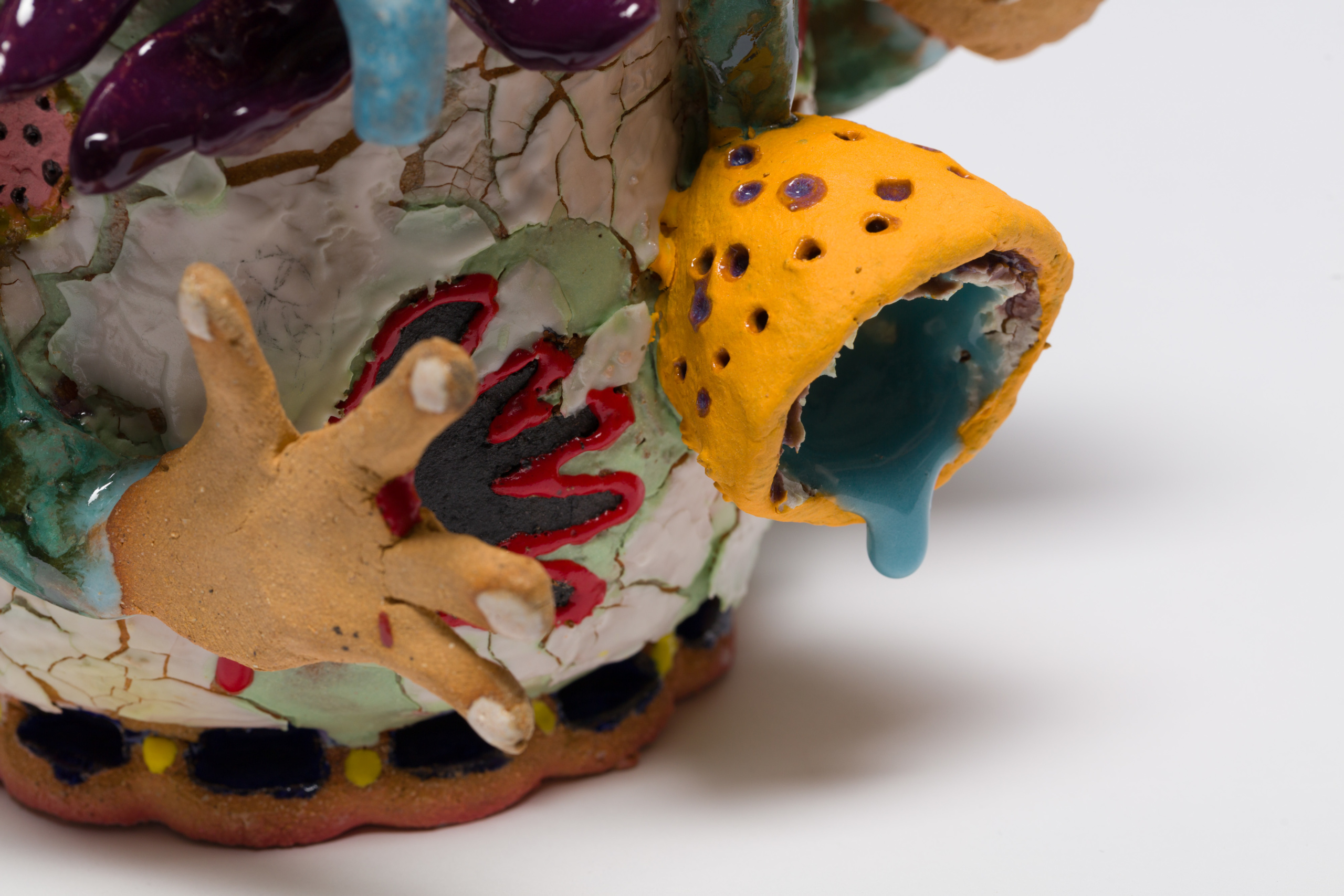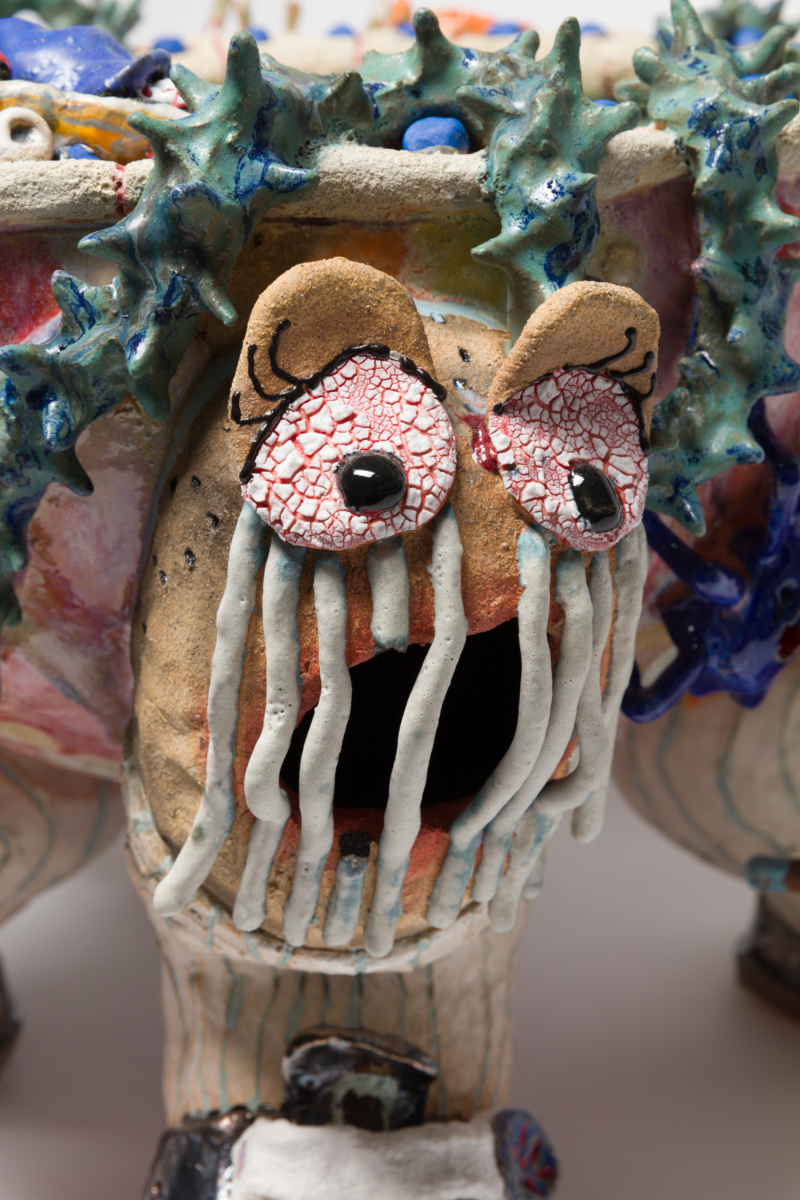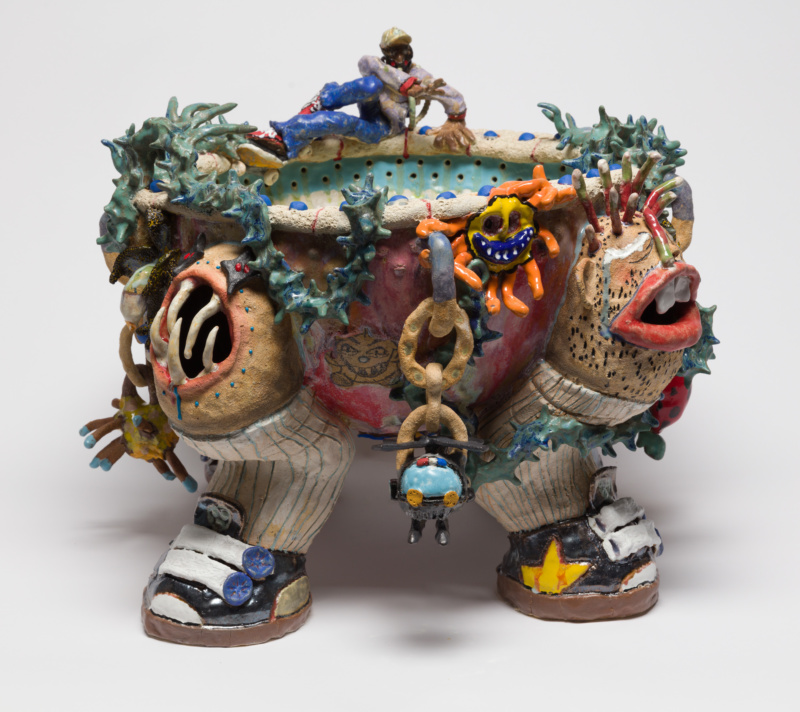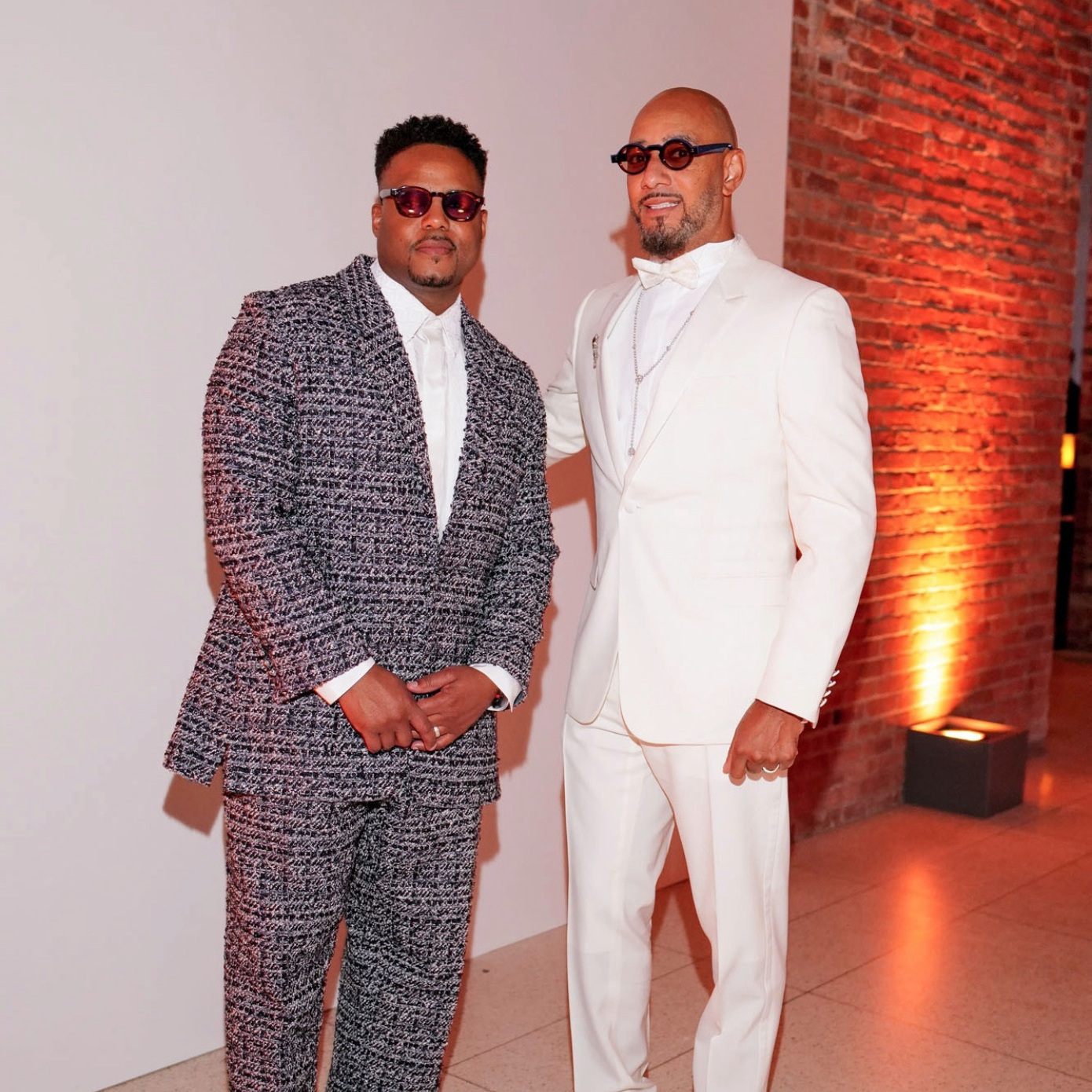
“I grew up really religious, having Muslim school on Sunday. It always fascinated me that the devil is made of fire and people are made of mud,” Sharif Farrag explains, when we sit down to lunch at New York’s Independent Art Fair, where he’s showing with Portland, Oregon based gallery Adams and Ollman. I’m eating an avocado sandwich that is overstuffed and gloopy. It exceeds itself, spilling all down my front, not unlike his colorful, nonchalantly sloppy ceramics that synthesize his Syrian-Egyptian heritage, San Fernando Valley street culture and a profusion of fantastical, chimeric creatures. He continues, “Clay is a mixture of the two, fire and mud; there’s this really intensely spiritual aspect to the medium.”

Farrag came to ceramics fairly recently, following a two-month stint in Fez during his BFA. He was excited by the respect it accords to great Eastern civilizations from China to the Middle East—unlike his painting background, which has historically privileged a European canon—as well as by Long Beach’s own ceramics tradition, closer to home. Days were spent at a factory churning out tagines for tourists, learning to throw on the wheel and soaking in the local vocabularies of tilework and patterning. But it was during cafe-fueled nights, hanging out with new Moroccan friends, that he realized just how global hip-hop and death metal culture were. He also found himself intrigued by black magic practitioners, which resonated with the superstitions he grew up with.

“There was a point where I was thinking, ‘why am I obsessed with my Mom’s way of decorating the house?’” And sure enough, snippets made their way into his shows: hamsas to protect against the evil eye, the musky olfactory hospitality of bakhoor and the carpets from his childhood home. But he found it crucial to represent his own hybridized second-generation identity by juxtaposing them with the skateboarding and hip-hop culture he grew up with, as well as with the interstitial, otherworldly atmosphere generated by his father’s epilepsy. His works feature strange, often absurdist characters depicted in a painterly glaze that draw as much from skate graphics and Underground Comix artists like Robert Crumb as from comparing the diasporic, immigrant experience to having multiple personalities.

Farrag eschews traditional exhibition texts that frame his work in any fixed way, saying, “I like to keep it light, and open in not attaching too many words to it.” Instead, he draws flyers; for his first big gallery show, he translated the “intense” feeling of being brought to market into a comic about becoming a toy for sale. And while he’s looking forward to traveling in the future, he’s psyched to keep learning—lately he’s intrigued by Sufism—and building at home. He wants to continue pushing through his defense mechanisms—“they make you comfortable, but they hold you back in a lot of ways, creating fear inside of you”—and embracing challenges. “It’s so simple, but that’s what I think my work is about. It expresses freedom being an Arab American.”



